| The
Red Shadow
Cast
For an indication of how different manufacturers' figures fit in with each other, visit the Figures Size and Compatibility Page, with figure reviews. What follows, here below, is an introduction to some of the troops you will find described in the history section, and photographs you will find from the links (left). The French Armies in Africa were the Armee d'Afrique and the Troupes de Marine (called La Coloniale in 1900).
Tirailleurs Senegalais are now available from Reviresco, They were used all over Africa, from the Cameroons, through the Central Sudan and into West Africa. Originally raised in Senegal, they were also units from the Congo, and other areas of West Africa. SEE THE NEW TIRAILLEURS FROM REVIRESCO The Armee d'Afrique was the main protagonist in Frances occupation of Northern Africa. The four, mostly European, units of the Armee d'Afrique were the Zouaves, Infanterie Legere d'Afrique (Known as colloquially as Battalion d'Afrique or Bat d'Af and less formally as Les Joyeux), Chasseurs d'Afrique and Legion Etrangere. The Zouaves were the elite units of the Armee d'Afrique comprising both French enlistees and locally raised recruits. They can be modeled with Foundry's Franco Prussian War Zouaves and come in various poses both with and without marching packs including Bugler and Officer. Figure conversions are necessary for artillery men. The Infanterie Legere were comprised of penal battalions employing harsh discipline. Much of what has gone down in folklore as pertaining to the Foreign Legion discipline actually finds its history in the Bat d 'Af. Their uniforms were based on those of the legion. I use the Old Glory "Skirmishing Legionaries" in shirtsleeves, with red or white pants. These can also be used for sapper units and converted to be playing with dynamite or whatever else sappers like to do. The Chasseurs d'Afrique were used in force along the Moroccan border region to patrol the supply lines (which ran parallel to the border) and used for reconnaissance and pursuing raids back into Moroccan territory. They are available as figures from Old Glory, with Foundry making a suitable mounted officer figure. They fought mostly mounted on white horses but can be duplicated with dismounted figures using the Old Glory "skirmishing Legionaries" figure or Foundry dismounted Chasseurs from their Franco Prussian War range. If using the OG skirmishers, add a saber made from thin brass sheet or "green ribbon putty" or cut from other unwanted figures. The Legion Etrangere are available from Old Glory, as is a beautiful model of the Fort Zinder scaled from the movie Beau Geste. Many poses are available including mounted companies, skirmishers, marching, MG and crews who can also be used for artillery crews. The officer pack from this line also is suitable for officers for the Infanterie Legere.
The term Spahis has two meanings. It can mean locally raised irregular levies, often organized into Goums and used as mercenary troops. References to small units of Spahis used in remote French outposts usually mean this. The Spahis Algeriens were a more formal regular cavalry along the lines of the Chasseurs d'Afrique and had very fancy outfits. Figures for Algerian and Senegalese Spahis are now available from the Honorable Lead Boiler Suit Company. The Armee d'Afrique was supported by significant contributions from Irregular units. The Goums were indigenous irregular gendarmerie similar to the British Indian Army's Scouts of the Northwest Frontier.
Units of camel mounted Spahis attached to companies of Tirailleurs Algeriens were used for subduing the Tuat region, but despite some successes were considered unreliable. In 1902 they re replace with the Compagnies Sahariennes. Compagnies Sahariennes were recruited from Chaamba Arabs and Tuaregs with a French Cadre. In the Tidikelt, the company was some 200 strong, of which about ¼ were mounted with a French cadre of about 35 but the companies were significantly smaller further south in the Tuat and beyond. These can be modeled from the Old Glory Camel mounted Arabs, whose spear needs to be cut out and replaced with a rifle. One of the figures can be decapitated and topped with a head from a French Officer. The Tin Soldier make rifle armed camel riders, but I have as yet not seen any of these. The foot elements can be made from rifle armed Arabs from the Old Glory Arab range with a few Skirmishing legionnaire type figures for NCO's. These units covered staggering distances in the worlds harshest of environments, usually 50 miles per day but up to 100 miles in a single day in an emergency. The camels and horses were usually in tow, being preserved for battle at the end of the march. Small indigenous units of these were also used in the southern desert fringes. Artillery is provided by Riveresco and is available in French 75's or Kruup 77's. Foundry also makes French 75. These, and machine guns (available form Old Glory) shouldn't be available until about 1900 onwards. Various companies make pack mules and camels. The Riveresco gun is particularly suitable for being converted to a mule borne gun. In most regiments, Europeans handled MG and Gun teams with indigenous men used as ammunition handlers. The 8-cm mountain gun from Old Glory's Spanish American war range would be a good field piece to use and to model as being carried by pack animals. It is a muzzle loader, but should be easy to make look a breech loader with a bit of conversion. Here are some shell templates for use in The Sword and the Flame. Their factors are printed on them. Click on them to get them full sized. Save them and them re-size the templates to your requirements. We us 3.5" for ground burtst - and 4.5" for air burst. The various antagonists to the French cause in the early 20th century, most of whom were Berber, not Arabs, as is commonly misstated, can be modeled from the Old Glory Arab line. These are used to represent the Tuareg and Moroccan Berbers who were raiding across the border into Algerian territory. For a quasi-regular quasi-uniformed unit such as those of Bou Hamar el Rogui I use Foundry Franco Prussian Zouave figures painted in gourdy bright colors.
So here you have seen a small sample
of photos available for viewing.
|
|
|||||||||||||||||||||||||||||||||||||||||||||||
|
|
||||||||||||||||||||||||||||||||||||||||||||||||
 Available
28 mm miniatures for gaming French Colonial adventures in Northern Africa,
The Western Sudan and West Africa in the
late 19th and early 20th century. Most of the required figures can be represented
by currently available figures. This list should not be considered exhaustive.
There are numerous 15 mm, 20 mm 25 mm and the excellent Redoubt Miniatures
30 mm French Foreign Legion range. Our table top operettas are enacted
out with the current popular 28 mm range, whose size is typified by Foundry,
Old Glory and Dixon among others.
Available
28 mm miniatures for gaming French Colonial adventures in Northern Africa,
The Western Sudan and West Africa in the
late 19th and early 20th century. Most of the required figures can be represented
by currently available figures. This list should not be considered exhaustive.
There are numerous 15 mm, 20 mm 25 mm and the excellent Redoubt Miniatures
30 mm French Foreign Legion range. Our table top operettas are enacted
out with the current popular 28 mm range, whose size is typified by Foundry,
Old Glory and Dixon among others.
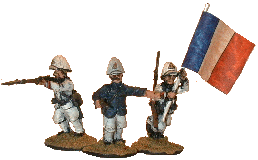 The
Troupes
de Marine was used in West African Soudan in 1880's and 1890's that
brought them as far as the Algerian border. We also use them, along with
sailors for fictitious and alternate history battles in North Africa as
well as battles in West Africa and the French Soudan.
The
Troupes
de Marine was used in West African Soudan in 1880's and 1890's that
brought them as far as the Algerian border. We also use them, along with
sailors for fictitious and alternate history battles in North Africa as
well as battles in West Africa and the French Soudan.
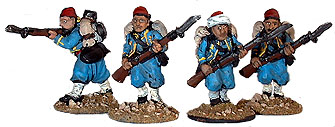 The
Indigenous North African regiments raised by France consist of the Tirailleurs
Algeriens and the Regiments de Spahis Algeriens. There were
also Tunisian and later, Moroccan versions of these units. The Tirailleurs
were regular infantry raised from locals, and used as supporting units
raised independently throughout Algeria. These can be represented quite
adequately from the same figures mentioned above for the Zouaves
from Foundry's Franco Prussian line just painted differently.
The
Indigenous North African regiments raised by France consist of the Tirailleurs
Algeriens and the Regiments de Spahis Algeriens. There were
also Tunisian and later, Moroccan versions of these units. The Tirailleurs
were regular infantry raised from locals, and used as supporting units
raised independently throughout Algeria. These can be represented quite
adequately from the same figures mentioned above for the Zouaves
from Foundry's Franco Prussian line just painted differently.
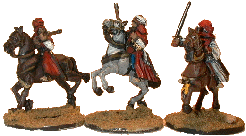 With
the notable exception of the Red Shadow, Goums usually fought within
their own geographic regions particularly so in Algeria, but not always.
The first Regular Goums (un-uniformed) were recruited in Morocco after
1907 and companies comprise 120 foot, 50 mounted and a small mule carried
MG section. These can, as mentioned, be perfectly represented by Old Glory
Arabs.
With
the notable exception of the Red Shadow, Goums usually fought within
their own geographic regions particularly so in Algeria, but not always.
The first Regular Goums (un-uniformed) were recruited in Morocco after
1907 and companies comprise 120 foot, 50 mounted and a small mule carried
MG section. These can, as mentioned, be perfectly represented by Old Glory
Arabs.
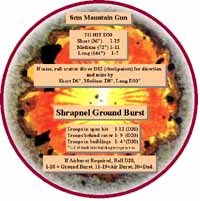
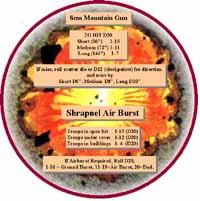
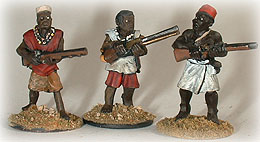 For
Sub Saharan Africans and tribal figures of the Azande and others in Dar
el Kuti, Foundry make all the necessary Africans from their Darkest Africa
range. A mixture of these, Zanzibari Arabs from Foundry and Old Glory Arabs
make good opposition for the French in Chad. West African Sofas can be
modeled from Foundry Askaris and from Dahomians from Dixons range.
For
Sub Saharan Africans and tribal figures of the Azande and others in Dar
el Kuti, Foundry make all the necessary Africans from their Darkest Africa
range. A mixture of these, Zanzibari Arabs from Foundry and Old Glory Arabs
make good opposition for the French in Chad. West African Sofas can be
modeled from Foundry Askaris and from Dahomians from Dixons range.
